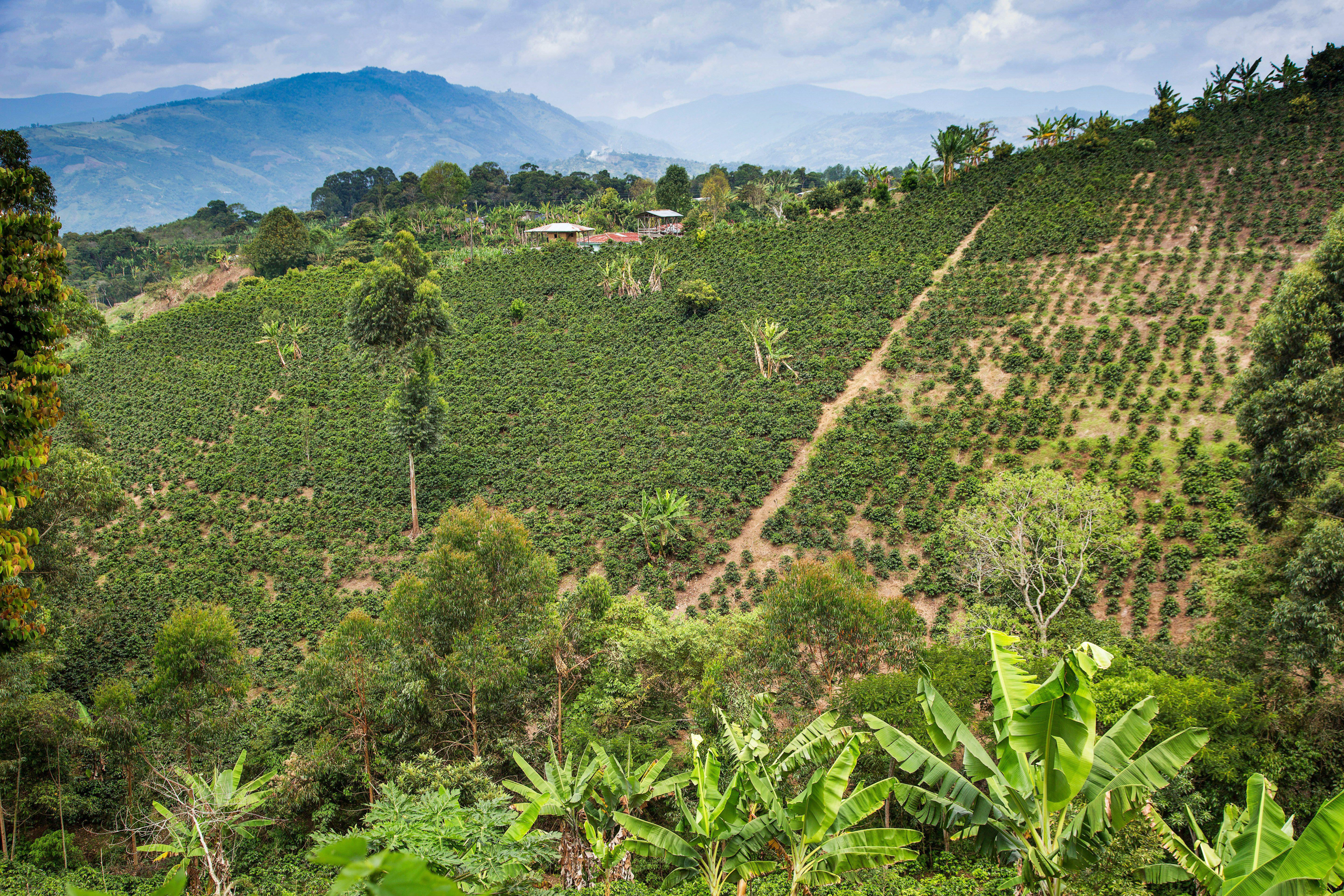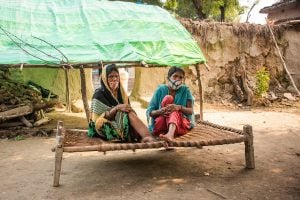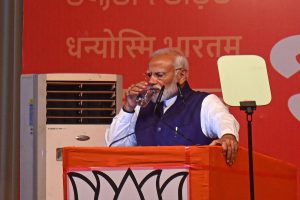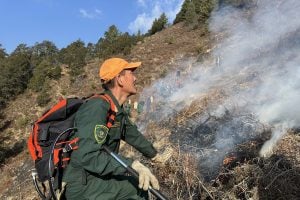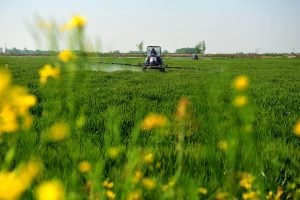“Environmental education has gone from being something very niche to a central issue on the agenda,” says Zelmira May, an education specialist for Unesco in Latin America. “Before, this issue was not very relevant in Latin America. Today the situation is completely different.”
Though this branch of education is still developing, since the first international discussions on the subject in the 1970s, its central objective has been to develop an “environmental rationality” among citizens – that is, to be aware of the intertwined nature of ecosystems, biophysical processes, and human activity.
Signed in 1975, the Belgrade Charter was the world’s first international declaration on environmental education. At the time, the UN said: “We need nothing short of a new global ethic – an ethic which espouses attitudes and behaviours for individuals and societies which are consistent with humanity’s place within the biosphere.”
But that first conception contrasts significantly with contemporary public policy. Verónica Cáceres, a researcher at Argentina’s National Council for Scientific and Technical Research (Conicet), says the Belgrade Charter was informed by conservationism. “It was in the 1990s when the discussion turned to education for sustainable development,” she explains, “which integrated human activities and nature on the same level.”
At the time of writing, there were 89 recorded examples of environmental policy instruments implemented by Latin American governments that incorporated education. Most of them establish inter-ministerial work plans that seek to implement projects at the elementary, middle- and high-school levels. An inter-ministerial approach allows environmentalism to cut across the curriculum, teacher training, and the development of green technology and infrastructure.
8
There are currently eight Latin American countries with a law or national strategy for environmental education: Argentina, Brazil, Chile, Colombia, Dominican Republic, Ecuador, Guatemala and Peru.
However, as a world region Latin America is one of the lowest investors in education. According to World Bank data, the region’s public spending averages for education have slumped to lows not seen in 20 years. These challenges only add pressure to the difficult task of coordinating educational projects between national and local governments.
These circumstances have led many teachers – especially in small schools – to manage environmental projects in their localities themselves: the tasks of talking to authorities, obtaining funding and entering competitions to bring visibility all fall to them. Here, Dialogue Earth shares the success stories of three such teachers in Latin America.
One person’s rubbish, another’s future
Ramón Majé is a maths teacher at the Montessori Educational Institution in San Francisco, a small, coffee-growing town in Colombia’s south-western department of Huila. In his seven years here, Majé has made his mark far beyond the blackboard.
“There used to be a lot of dropouts in this school,” explains Majé. “Many of the children who come here are the children of seasonal farm workers. When the growing or harvesting season was over, whole families would move elsewhere for work. We managed to reduce that.”
In 2017, Majé launched an initiative called Cafelab, literally a “coffee laboratory”. He explains: “The project aims to work with student coffee farmers in the area. We want them to learn about repurposing coffee waste. We don’t want them to leave to elsewhere for work, and we also wanted to address an environmental problem that had not been recognised.”
The project began when Majé arrived in San Francisco. During his training, Majé had noted a key flaw in the teaching conventions he was introduced to. “If a teacher is going to give mathematics or calculus to his students, but it is not related to a student’s immediate environment, that information becomes empty and meaningless,” he says. “When I started in the Montessori, I integrated mathematics with what the students knew best. It was all about coffee.”
Thus, coffee measurements were integrated into addition and subtraction exercises. The children began to see the class differently: “One day a student came up to me and said: ‘Teacher, on my farm all this coffee waste is being thrown away. And they are thrown into the water bodies.’ So, I proposed that the students conduct a context analysis.”
Majé teamed up with the students’ science teacher, and they set a class project to investigate the effect of discarded coffee husks on water and soil. Their first discovery was that almost everybody in the village threw most of the coffee husks they produced into the river, and some onto the land. Their second discovery was the soil acidification this was causing, preventing other plants from growing in the area.
Next, Cafelab determined that the best way to neutralise this acidity was composting the coffee waste in containers. The pupils tested various composting techniques and concluded it was indeed a viable waste treatment solution.
Once Cafelab’s early composting findings were established, the students came to Majé with alternative coffee waste solutions: “One proposed making wine, another said he could make scented candles, another said he could make an electric battery from the acid in these shells, another biogas.”
Montessori’s principals dubbed Cafelab “los locos”, the “crazy ones”, and some teachers were sceptical of this new style of teaching, but the project continued. Majé and his students continued collecting discarded coffee husks for different experiments in the laboratory.
“Cafelab was financed out of our own pockets,” recalls Majé. “Every outing and every piece of equipment came from us. Over the years, the Ministry of Education has made minimal contributions, but the answer was always that there were no resources.”
It was not until Cafelab started winning international awards that the initiative gained prominence in Colombia. “At the moment, we have a good relationship with the Ministry of Education, but that was after we were recognised as one of the best schools in the world,” says Majé. The school entered every competition they could find: today they have 34 awards.
Across maths and science, this project-based approach is now integrated throughout the school year for Montessori’s 14- to 17-year-old San Francisco students. “There was a revolution after the World’s Best School award,” says Majé. “We had 350 pupils, and since November last year we have gained a further 100 students.”
What began as a school project has evolved to become an educational model, one that these teachers seek to replicate in Montessori’s 12 other local schools. Ultimately, Majé wants the model to spread throughout rural Colombia: “We would like every region to have a similar model.”
Recycling out of a water emergency
Mexico is a dehydrated country. Following the declaration of a national drought emergency in 2021, news outlets continually remind Mexicans that, sooner or later, their taps could run dry.
“There were states that were completely without water for weeks,” remembers César Guzmán Balderrama, a computer programming and robotics teacher at the Vigotsky Cultural Institute public school in Tampico, a city on Mexico’s north-eastern coast.
“We see everything related to computer programming with children from seven to 11 years old, and I try to teach them how this is implemented in the world,” says Guzmán. Last year, three of his students received the Sustainable Schools award from educational organisation the Santillana Foundation, for a wastewater recycling project that took place within their own school.
It all started with a homework assignment Guzmán set his final-year primary pupils. They already knew the programming basics for devices including motors, water pumps and light switches, but the scope of these learnings did not extend beyond mechanics and code. So, when a national science fair called for sustainable development projects, Guzmán tasked his students with solving an environmental problem.
“Three boys asked me to address the issue of water waste,” recalls Guzmán. “When we did some research, we discovered that hand washing wasted a lot of water at school. So, we started counting how many children went to the toilet and how much water was wasted. It was a lot of litres.”
Together, they designed a system that stores and filters water after it is used to wash hands, before pumping it into a special tank so that it can be repurposed for flushing the toilets. The 11-year-olds set about creating a small-scale working model for the competition.
The entry won, and the children were given the opportunity to travel to Mexico City. “But then they contacted us from other places to compete internationally,” explains Guzmán. “That’s when we decided to scale up the project and install the water recycling system throughout our school.”
With the same design the children had come up with, the school launched a successful project to recycle its water.
Guzmán is now intent on replicating the project in neighbouring schools. His team of three have graduated from primary school, but he believes that others will continue the cycle: “We want to share our project with other schools. We are sure that this, which worked for us, could be used elsewhere as well.”
Throw a disc to grow a forest
Jorgelina Gavotti now works at the same school where she once studied. Every day she travels a few kilometres to Villa Rumipal, a small town in Argentina’s Córdoba province, overlooking a gigantic reservoir. Here, she teaches chemistry to the senior students at the Gustavo Riemann 76 Provincial Institute of Technical and Secondary Education.
“We have a way of working in which we implement projects,” explains Gavotti. “We started in 2014 and the rule is that they always have an environmental or social focus.” These are team initiatives that the children develop throughout the year and involve diagnosing problems, then researching and developing solutions.
In 2021, the students were asked to consider forest fire solutions; in the nearby Calamuchita Valley, thousands of hectares of hills and pampas had recently burned, very close to the homes of several students.
There were many proposals, but one in particular impressed the entire teaching team. Called Re-Forest, the proposal concerned biodegradable planting discs that assist with forest restoration. “A group of three came up with the idea: two boys and a girl – the girl is my daughter,” reveals Gavotti.
The discs are made from recycled paper collected from around the town. Inside, a special powder mixes dehydrated fruit and vegetable peels with a variety of native plant seeds.
“It’s something very simple,” says Gavotti, “but when you see the results you can’t believe it. They took all the discarded scraps of what we mothers use at home, put them together, dried them in a solar dryer, crushed them, and started experimenting with quantities and materials that they put inside the disc.”
The pupils explored degraded land and collected soil samples. Back at the school laboratory, they added in the discs and measured variables such as soil acidity, and moisture and light levels. This enabled them to accurately determine disc-composting times, changes to soil conditions, and how long it took the seeds to sprout into plants.
Gavotti explains that following a disturbance like a fire, or the planting of a pine tree monoculture, soil can become very compact and acidic. Plants struggle to grow in such conditions and it can take more than five years for soils to recover naturally. “The [disc’s] paper just holds water longer than normal. The discs are composted in a month and a half and the soil is neutralised,” says the chemistry teacher.
Gavotti would like to continue this project year after year: “I don’t want recognition. What I would like is for them to help us buy certain reagents [needed for chemical reactions] that we need to develop the project.” This year, she plans to leave the experimental phase and start production. Eventually, Gavotti says she wants to make enough discs to supply local park rangers’ replanting efforts.

